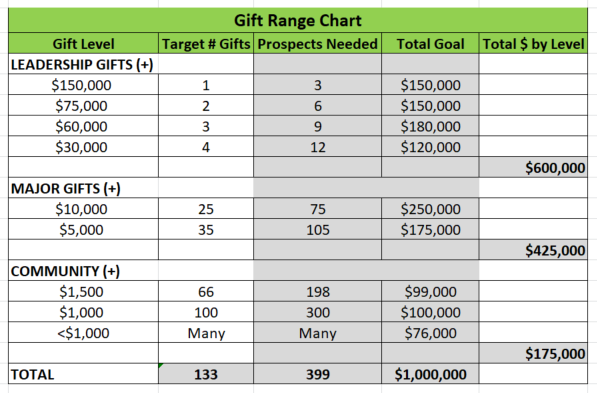Capital Campaign Prep – Questions to Ask Yourself
Recently, I have had the opportunity to work with several different groups who are considering Capital Campaigns. It’s surprising to see a rise in questions like this, which indicate agencies and departments are considering undertaking campaigns such as this to fund upcoming expansions and projects.
Capital Campaigns can be the right choice and an excellent source of funding for growth, if all of the important factors are in place and come together to have a successful campaign. One million, five million – that is a lot of money. What is the community currently being asked to support and how does your project fit into that?
In this post, let’s talk about assessing your readiness to plan and execute a capital campaign. When you have a project, a goal, designs and plans to explain that goal, and maybe even the start of some community excitement, here are some other questions I’d like you to ask yourself and your team (and your Board!).
How much money do you usually raise each year? How big is your donor list and your mailing list?
If you usually raise $20,000 per year, and are hoping to raise $350,000, you might be okay. If you raise $20,000 per year and hope to raise $8M, that gives me cause for concern. Where will these additional donors come from if they are not already connected to you?
Can you make a gift range chart work? Do you have enough leadership and launch gifts to get your campaign more than half way before you go public?
The silent and public phases are not set in stone, but if you do a gift range chart and stare at it wondering how in the world you will ever get that many prospects at those high numbers, better to face up to it now instead of mid-campaign.
Do you need a consultant? Do you need a feasibility study?
Yes and mostly yes. Okay, so I can see that you might think “of course, a consultant is going to say you need a consultant!”But, what I learned at the Lilly School for Philanthropy is that a campaign runs smoother and more efficiently with counsel to guide it, accurate and experienced advice, and most important – their ability to speak to your donors and explore the feasibility in a way that you cannot. Plus – let’s face it, a consultant is not going to take your project if they think it cannot be a success. They don’t want their name attached to that. So, at least talk to some as you explore your options.
How much money do you have to operate the campaign?
You have to spend money to make money. Campaigns are very expensive: consultant, studies, case statements, printer and postage charges, graphic designers. Also staff to lead the campaign, staff to process incoming donations and operate your CRM, staff to help with thank you notes, tax letters, pledge tracking, etc. Cost of lunches and dinners and other donor engagement… events like groundbreaking and public phase launch.
Do you have staff for this?
If the Director of your agency – who already does operations and oversight and everything else – is expected to be the main fundraiser AND the one who runs the campaign, this is a problem. No one can do everything and be everywhere. You need extra staff, even part time, who can completely focus on the important tasks associated with the campaigning. Volunteers can help, but staff provide the structure volunteers work within.
Is your Board invested? Will they make leadership gifts in the silent phase? Will they create prospect lists, do campaign asks, solicit their social circle, and support the staff?
All of this is vastly important… One or two staff cannot do this alone, and the higher the goal, the more people are needed. Remember, you need 3 prospects for every successful gift. (See the gift range chart below). So, if you need two $100,000 gifts, you should have 6 names on your list that are capable and likely to make a gift at that size. In visiting the six, it’s statistically likely that 2 will go ahead and make that gift. Now, the good news is, if another person turns you down for $100k but offers $50k then that ripples down through your chart and is still a welcome gift. The 3:1 really helps with planning.
What other organizations are also doing capital campaigns in your community at the same time?
This is a big consideration. In my town, Penn State is always fundraising, and then you have the arts center and the science center and the volunteer/free health clinic all raising significant funds for expansion. Can the community sustain and support all of these projects at once?

There is so much more for us to talk about, but these are some things to get you started. Capital Campaigns can be exciting and successful and transform a community resource through the generosity of many, so I do not mean to discourage you. Instead, to help you evaluate and consider the best way to move forward with the resources you have, and know how to talk to your board and directors if it’s not coming together. There are so many worthwhile projects; with the right steps, yours can be the next big funding success!
(If you need help, please reach out to the staff at PRPS. They can connect you to resources, provide expertise, and make note of your needs as they develop future programs and training sessions).
